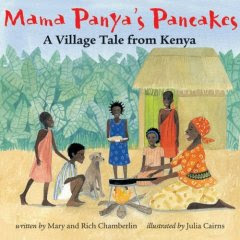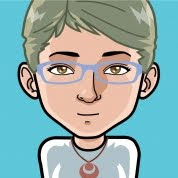Thursday, 3 November 2011
Geography and the Global Dimension
Thursday, 21 October 2010
Blipfoto: reading and creating photo journals
I realise that I've been rather negligent of this blog since June and I'd just like to say that it's not all down to my new obsession with `Blipfoto'. I really have been very busy and when I get a few more minutes I'll share some of the ideas linked to my new project: Geography and the Global Dimension.
However - I have become a little obsessed with this photo-blogging or photo-journaling website since a friend told me about it. There are several things that appeal to me about the website: first it keeps me in touch with a friend who now lives in Spain and we can share some of the things that interest us (I know many people use Facebook to do this but I quite like the different `tone' of Blipfoto), second I can keep my own journal which I hope to be able to look back to in future years and third MOST IMPORTANT from my point of view is that I can read the journals and look at the images of people who live in and beyond the UK. Doreen Massey (OU Emeritus Professor of Geography) said something like `Space' is the meeting point of a thousand stories and Blipfoto certainly is that. One of my favourite journals is written by HPX who lives in New Zealand. It has felt quite a privilege to read her journal entries about the latest New Zealand earthquake and to gain a sense of how the earthquake has affected her and the people of Christchurch and district. I hadn't realised how long and how frequent the aftershocks of an earthquake can be. It has been a real eye-opener for me to read her entries and see the way she weaves in the normality of everyday life with the constant terrifying threat of what the next `rattler' might bring.
I also love the story of `Brian the Snail' - why not follow his adventures for the rest of the week. I think this very simple tellingof a photo-story is something that we could use with children.
Wednesday, 13 January 2010
Jewel of Muscat - a new website
It's great to find a website that can help children in the UK understand a little about how trade and exploration happened in other parts of the world. This one focuses on the reconstruction and sea voyage of a traditional Muscat trading ship. There's an interactive trading game that children will enjoy. It will introduce them to trading ports in Asia that they might never have heard of. The educational activities I looked at appear rather limited in scope - but this is still early days for this site. There is much here to recommend and I think it will grow into a very useful resource. Click here to view >>>
Wednesday, 6 January 2010
NEW Website: Global Gardens
Tuesday, 5 January 2010
BBC News Audio Slideshow: Life on the water
This is a really good short audio slideshow of the Can Tho floating market in the Mekong delta. Short stories of three (4) peoples lives.
Tuesday, 29 December 2009
Chembakolli - a village in India

We used drama, sense impressions, art, creative writing & data handling to help year 3 & 4 children to gain a sense of what it might be like to live in ` A Village in India'. Originally taught in 2002, this geography unit set out to embrace citizenship, art & drama and speaking & listening which fit very well with the broader approach to developing a `creative curriculum'. I created a website to share resources (though some of the pictures that I sourced from the internet are now looking very dated). The activity plan for the unit can be downloaded from the website.
I've now provided an update for this unit by creating a chart to show where the learning acitivities fit into the >>>> (click on the red text) New Primary Curriculum (NC 2011).
You can download this from here.
Tuesday, 27 October 2009
Flip Flotsom - exploring the idea of sustainability through the journey of the humble flip-flop in Kenya

I've just come across this poem and video on YouTube (though you may know it as it's been around since at least 2003). I think both are wonderful - the poem and video are lyrical explorations of what happens to a `flip-flop' from the time it is manufactured to the time it is recycled.
Flip Flotsam
This is the beach
where the flip flops come
at the end of their
flip flop trip.
And where does a
flip flop trip begin?
the floor of a flip flop factory;
on the shelf of a flip flop shop;
or the foot of a flip flop fan?
See Elspeth Murrays website for a full version of the poem (and lots more too!) She sounds really great and has done lots of work in schools.
You will find the video on You Tube
This video is also available from Jouneyman Pictures who have lots of documentary videos available to support geography though not all are suitable for primary children.)
Saturday, 25 July 2009
Starting with geography: using picture books to plan an integrated topic in the primary school

If you are looking for alternative starting points for planning an integrated topic in the primary school – then a picture book could provide a very accessible way in. I think this particular book could provide a starting point for Year 2’s (6-7 year olds) to Year 4 or maybe even Year 5 (8 – 10 year olds).
First the book that you choose has to have a strong geographical theme running through it. My chosen book, `What if …’ is about recycling so it fits very nicely into the theme of ESD (Environment & Sustainable Development). This is a theme that is shared equally strongly with science and also with citizenship. So we have a very good basis for a geography/science/citizenship integrated topic.
Now I realise that all over the land in the world of the English primary school the words `we’re delivering a skills based curriculum’ are currently `hot’ but I want to argue here for thinking about concepts. We need to start with the `big ideas’ of a subject.
I want to start by explaining how to do this where geography is the lead subject. First I developed a planning grid of empty boxes with headings that focus on both geography’s `big ideas’. In terms of `big ideas’ I want to highlight PLACE, SPACE & SCALE as being the most important for primary geography though you’ll notice in my planning grid that I’ve linked together `place & scale’ and then `location & space’. On the exemplar sheet I’ve prioritised `environmental interaction (including ESD)’ as this is essentially what the book is about. Though I’ve also included `interdependence & connectedness’ – two very important ideas that were largely neglected in the current English National Curriculum programmes of study for geography, and then `changing human & physical processes’ and `cultural understanding & diversity’. On the blank planning sheet I have left the boxes under `curriculum links’ blank. Though as I read through the text of `What if …’ I realised that the book also embraced art, science and citizenship – so I added these headings onto my sheet.
So how did I use the planning sheet?
First I read through the book and listed all of the ideas that the book suggested to me. These are in black type.
Next I looked at these ideas and though about `activities’ and the kind of ideas that might be developed into activities and I listed these in blue type.
I haven’t done the next stage – but what I would do next is to choose three or four of these ideas/activities and develop them into an outline for a medium term plan.
If anyone uses this idea and adapts it for use with their own class I’d love to hear how it goes. Please add a comment or get in touch by e-mail. You’ll find contact details on the Geographical Association website.
Friday, 24 July 2009
Using picture books to develop geographical ideas
When teaching an integrated curriculum it is important to understand how the `big ideas’ from different curriculum subject or area can contribute the developing children’s understanding of the world.
Place space and interconnectedness are three of geography’s `big ideas’. Here they are used in conjunction with `key questions’ to help you plan the geography component of a study starting with a picture book that has a strongly geographical theme.
Thursday, 21 May 2009
Nelamangala Market
Tuesday, 29 January 2008
Geography & Food: starting from stories
Monday, 28 January 2008
Workshop: Geography & Food
The PowerPoint that I used to summarise the focus of my planning is shown below:
There are a number of projects linked to food and farming on the Oxfam Education website, including Making a Meal of It. Activity 5: Unpacking the supermarket bag is referred to on slide 6 of the presentation.
There are lots of links to online materials for teaching about food. Some are strongly geography focused while others focus more clearly on other curriculum areas, e.g. science. I'll be sharing some of these links on this blog over the next few weeks. If you have successfully taught geography through a food topic why not contribute your ideas.
Wednesday, 23 January 2008
Books & websites for developing an understanding of Global Citizenship and Education for Sustainable Development
 It was great to meet so many enthusiastic teachers at yesterday's Quality Geography Conference in London.
It was great to meet so many enthusiastic teachers at yesterday's Quality Geography Conference in London.One of the things we discussed was using books as starting points for learning in geography and I offered to make a book and website list available through this site. Click on the link below (green text) to access a WORD document which lists a selection of books and websites on the theme:
Global Citizenship and Education for Sustainable Development










